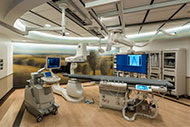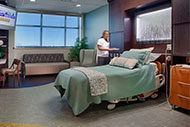The sooner facilities professionals can examine old systems and structures, the smoother the renovation will go. That’s why hiring a construction manager (CM) for preconstruction planning can help to set renovations up for success.
In a traditional design-bid-build process, the architect works with the owner to complete a set of drawings based on as-built records — often budgeting by square foot and giving the contractor, at most, a few weeks to become familiar with the building.
Alternatively, with a preliminary preconstruction award, the CM can be involved earlier, understand the project better and add more value. He or she works with the designer and owner to provide additional expertise during the design phase, adding useful insights about reusing or replacing mechanical-electrical-plumbing systems and envelope structures.
They can dig deeper into the scope of work to determine what’s required by plumbing contractors, electricians, concrete contractors and other specialists resulting in a more accurate budget. They involve specialized subcontractors early on to make the design the most practical, economical and efficient it can be for all the trades involved.
A CM also can release early orders for air-handling units and other items that require long lead times. From lighting to flooring to nearly everything in between, the products and materials required for hospital renovations often have higher prices and longer lead times due to the stricter codes that health care construction must meet.
As soon as structural steel is planned in the design, for example, the CM can order structural steel members with long lead times. Not only is this more economical; it can help to speed up projects instead of waiting for items to arrive.
With so many moving parts involved in renovation and health care regulations making projects more challenging, an experienced CM can provide valuable planning insights and preparations to reduce the number of surprises on-site.





